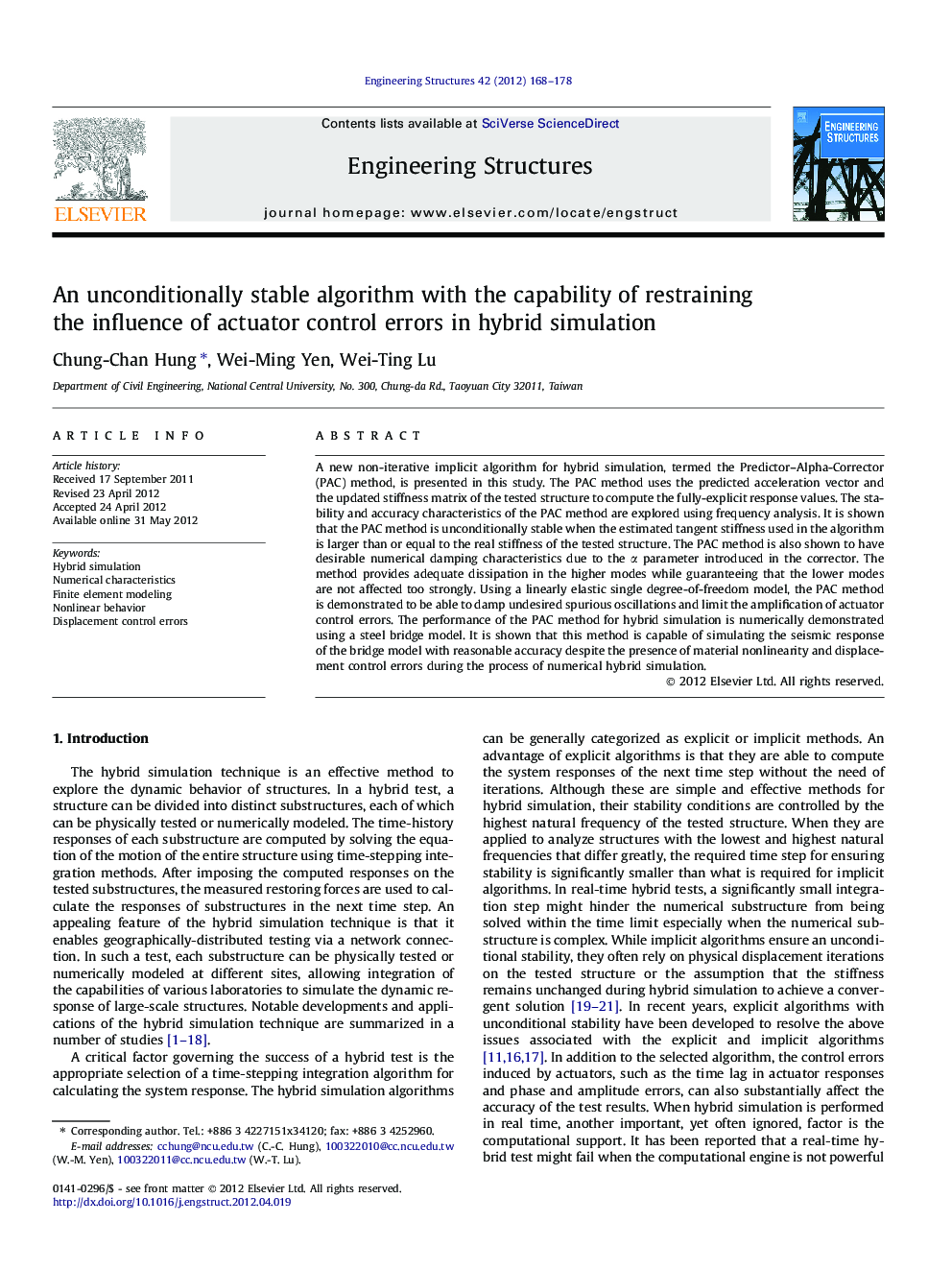| Article ID | Journal | Published Year | Pages | File Type |
|---|---|---|---|---|
| 267451 | Engineering Structures | 2012 | 11 Pages |
A new non-iterative implicit algorithm for hybrid simulation, termed the Predictor–Alpha-Corrector (PAC) method, is presented in this study. The PAC method uses the predicted acceleration vector and the updated stiffness matrix of the tested structure to compute the fully-explicit response values. The stability and accuracy characteristics of the PAC method are explored using frequency analysis. It is shown that the PAC method is unconditionally stable when the estimated tangent stiffness used in the algorithm is larger than or equal to the real stiffness of the tested structure. The PAC method is also shown to have desirable numerical damping characteristics due to the α parameter introduced in the corrector. The method provides adequate dissipation in the higher modes while guaranteeing that the lower modes are not affected too strongly. Using a linearly elastic single degree-of-freedom model, the PAC method is demonstrated to be able to damp undesired spurious oscillations and limit the amplification of actuator control errors. The performance of the PAC method for hybrid simulation is numerically demonstrated using a steel bridge model. It is shown that this method is capable of simulating the seismic response of the bridge model with reasonable accuracy despite the presence of material nonlinearity and displacement control errors during the process of numerical hybrid simulation.
► A non-iterative implicit hybrid simulation algorithm is proposed. ► The method is unconditionally stable. ► The method possesses desirable numerical damping properties. ► The method can control the spurious oscillations due to displacement control errors. ► The method performs satisfactorily for hybrid simulation of a bridge structure.
